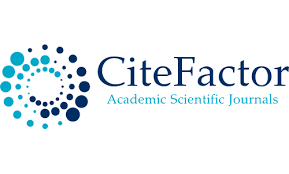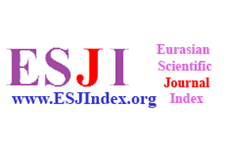STYLISTIC DEVICES WHICH ARE USED IN COMUNICATION
Niyatova Maftuna Norbek qizi
Jizzakh branch of the National University of Uzbekistan named after Mirzo Ulugbek The Faculty of Psychology, the department of Foreign languages Philology and foreign languages Scientific advisor
Pirmuhammedova Muhlisa Maxsud qizi
Jizzakh branch of the National University of Uzbekistan named after Mirzo Ulugbek The Faculty of Psychology, the department of Foreign languages Philology and foreign languages Student of group 203-20
##semicolon## Stylistic devices, Metaphors, Similes, Alliteration, Personification, Hyperbole, Anaphors.
सार
Stylistic devices can also be called rhetorical devices because they are often used in rhetoric, the discipline that covers effective and persuasive language use. Stylistic devices can also be called figures of speech because they often involve non-literal or figurative language. By carefully selecting and employing techniques such as metaphors, similes, alliteration, and personification, writers can craft a rich tapestry of language that captivates the senses and leaves a lasting impact on the reader. The most famous examples are alliteration, assonance and puns. Order-related rhetorical devices: these devices modify the normal order of words within a phrase or sentence. The most well-known examples are anaphoras, anastrophes, asyndeton, chiasmus, omissions, hyperbaton and polysyndeton .
##submission.citations##
Ниятова, М. (2022). Significant points on assessment procedure. Современные инновационные исследования актуальные проблемы и развитие тенденции: решения и перспективы, 1(1), 587–589. извлечено от https://inlibrary.uz/index.php/zitdmrt/article/view/5345
Abduganieva, M., & Niyatova, M. (2023). WHAT IS A CONTENT IN TEACHING ENGLISH LANGUAGE?. Theoretical Aspects in the Formation of Pedagogical Sciences, 2(11), 157–162. извлечено от http://econferences.ru/index.php/tafps/article/view/6941
Niyatova Maftuna, Abdurasulova Diyora. (2023). ENGLISH DOCUMENTS WRITING. International Journal of Contemporary Scientific and Technical Research, 423–430. Retrieved from https://journal.jbnuu.uz/index.php/ijcstr/article/view/629
Niyatova, M. (2021). The importance of a word and word formation a language system.
Teshaboyeva, N. Z., & Niyatova, M. N. (2022). The significant role of literature in teaching and learning process. International Journal of Development and Public Policy, 1(6), 70-72.
Niyatova Maftuna, Sayfullayeva Sevinch, Haydarqulova Sarvinoz, Makhmudova Adolat, Muminova Zukhra. (2023). THE ROLE OF PAIR WORK IN TEACHING THE ENGLISH LANGUAGE. International Journal of Contemporary Scientific and Technical Research, 427–431. Retrieved from https://journal.jbnuu.uz/index.php/ijcstr/article/view/474
Niyatova, M. (2021). PECULIARITIES OF PREFIXAL DERIVATIVES IN LANGUAGE LEVELS . Журнал иностранных языков и лингвистики, 2(3). извлечено от https://fll.jdpu.uz/index.php/fll/article/view/954
Teshaboyeva, N. Z., & Niyatova, M. N. (2021). The important meanings of category of tenses in contexts.“. Zamonaviy tadqiqotlar, innovatsiyalarning dolzarb muammolari va rivojlanish tendensiyalari: yechimlar va istiqbollar” Respublika miqyosidagi ilmiy-amaliy konferensiya materiallari toplami, 468-473.
Solnyshkina, M. I. (2022). Teaching English through innovative technologies. Web of Scientist: International Scientific Research Journal, 3(11), 1108-1111.
Teshaboyeva, N. Z., & Niyatova, M. N. (2021). General meanings of the category of tenses. International Journal of Development and Public Policy, 1(6), 70-72.
Niyatova, M. (2023). EFFECTIVENESS OF GROUP WORK IN TEACHING A FOREIGN LANGUAGE. Журнал иностранных языков и лингвистики, 5(5). извлечено от https://phys-tech.jdpu.uz/index.php/fll/article/view/7780
Teshaboyeva, N. Z., & Niyatova, M. N. (2021). The importance of a word and word formation in a language system. JournalNX-A Multidisiplinary Peer Reviewed Journal, 7(12), 337-341.

















